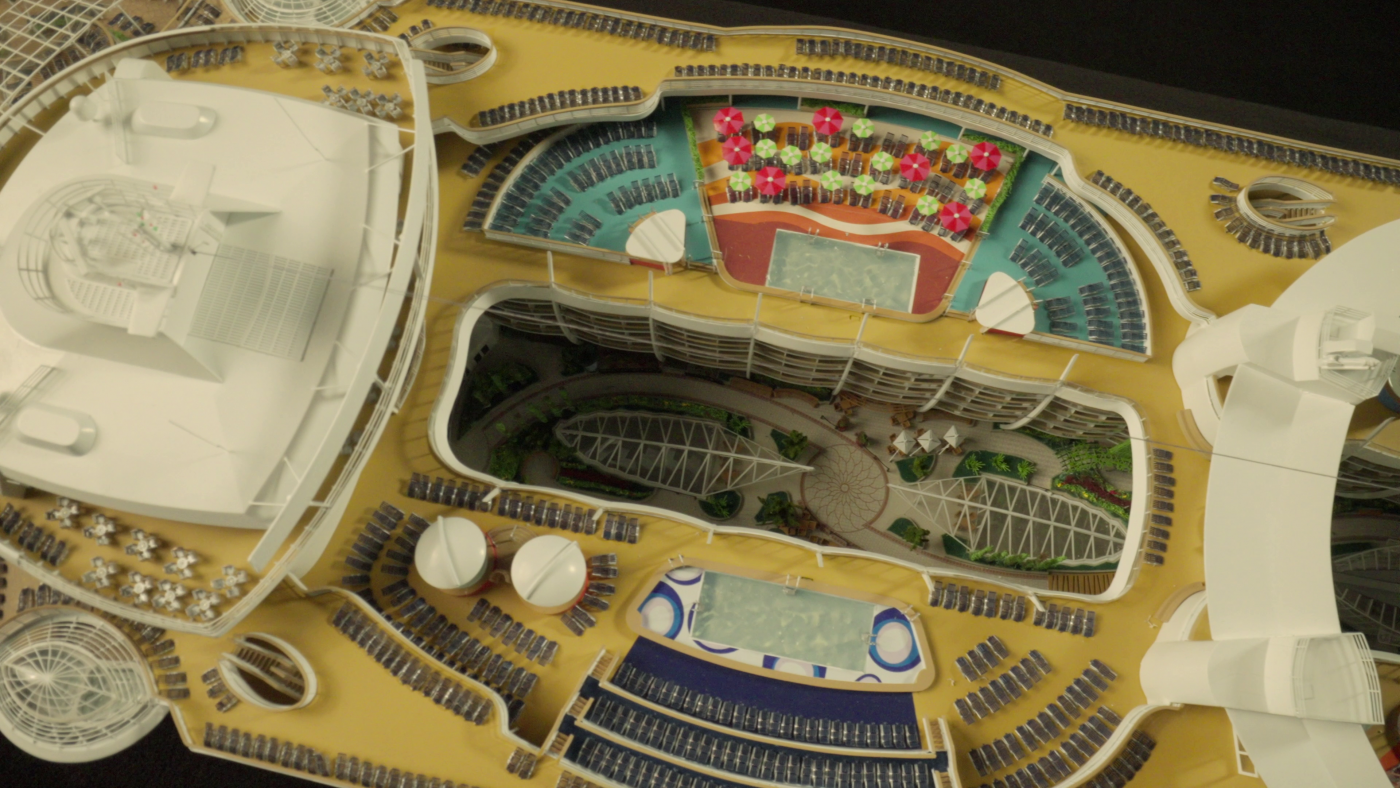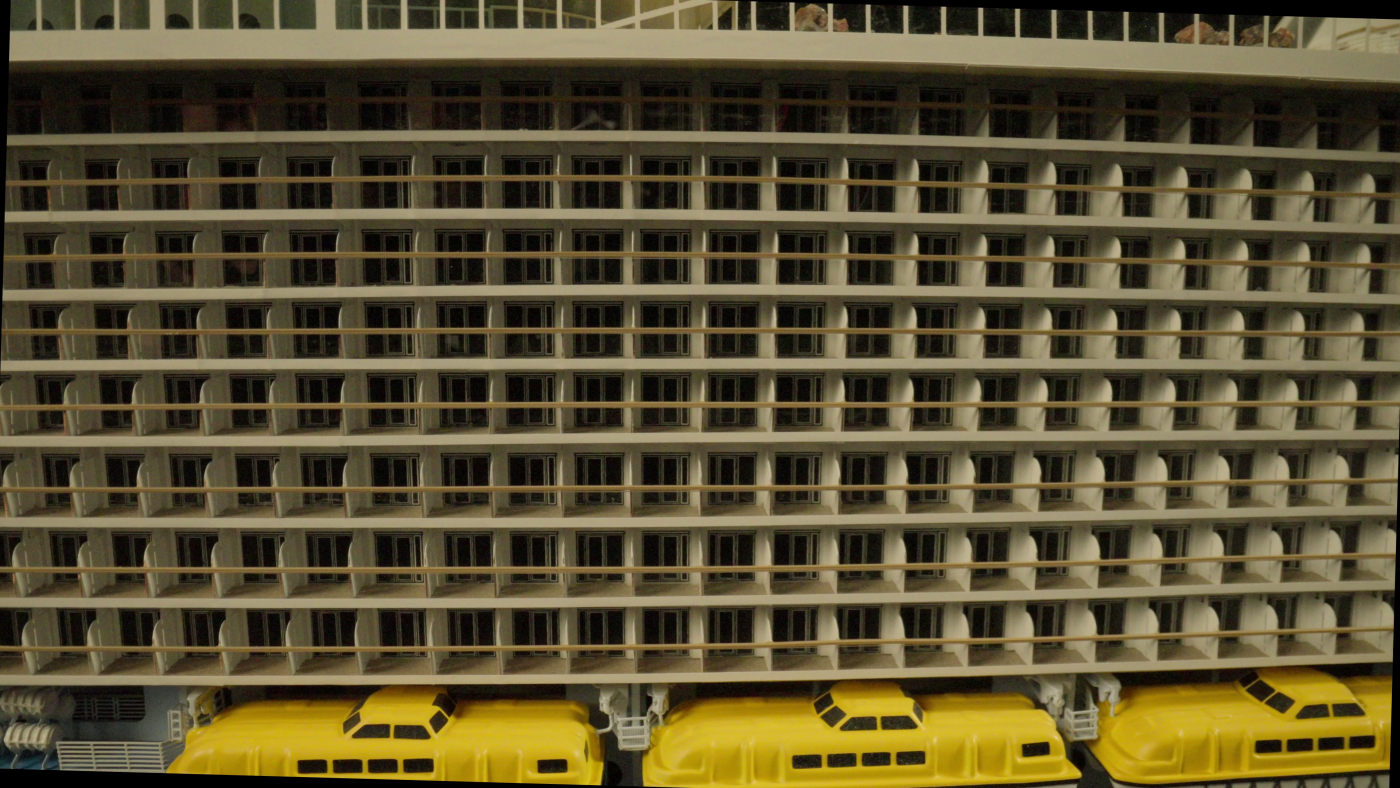Maritime Innovation In Miniature
Oasis of the Seas
This is a model of the Oasis of the Seas operated by Royal Caribbean International. Built in Finland, she was launched in 2009. Royal Caribbean International are industry leaders in the design of cruise ships and the Oasis of the Seas set new standards in several areas. She is the first ship of the Oasis class and at the time of her launch was the largest cruise ship in the world.
She is also one of the most energy efficient, technologically advanced, and most innovative ships in history. An architectural marvel built at a cost of $1.24billion, she spans 16 decks, encompasses 225,000 gross registered tons, is bult with 525,000 square metres of steel and 3300 miles of electrical cabling: that’s further than the distance from Los Angeles to New York. She can generate 4,100,000 litres of fresh water per day. She can carry 2,300 tones of swimming pool water in five swimming pools and 5,400 guests.
She is powered by three 20,000kw electric azimuth thrusters. Suspended under the stern they drive 20-foot propellers. Because they are rotatable, no rudder at all is needed to steer the ship. Four 7500 horsepower bow thrusters help her manoeuvre.
She was the first cruise ship to achieve a Green Passport designation, an important part of the voluntary ‘Clean Ship Design’ certification. Her hull coating is made of non-toxic materials that reduce hull resistance, and therefore increase fuel efficiency. The coating also makes it more difficult for invasive marine species to attach to the hull and therefore be transmitted by the ship to different ecosystems.

She has twelve separate diesel generators, allowing her to respond to different power needs depending on her requirements. An advanced energy management system conserves energy to make best use of it when it is required. A particular innovation is in her lighting systems which uses advanced motion sensors to reduce electrical lighting.
When building her they even thought of the future and her eventual re-cycling. To facilitate this they created an inventory of hazardous construction materials. She has an Advanced Wastewater Purification System, designed to be twice as stringent as U.S. Federal standards for in-port wastewater discharge. Everything that can be recycled, is recycled onboard Oasis of the Seas. She is equipped with shredders, bailers, compactors and crushers to ensure nothing is wasted and she has the largest cold storage room of any ship in the world to safely store recyclables compromised by heat.

She sails with a full-time Environmental Officer onboard whose responsibilities include training the crew in areas such as waste management, chemical management, and energy efficiency. She was one of the very first ships to be built with the new probabilistic damage stability rules developed by the International Maritime Organization and based on statistics of marine accidents. The ship has independent machinery systems for power, propulsion and comfort. Her ‘Redundant Propulsion System’ ensures that if one engine compartment is flooded or lost due to fire or other damage, the other can sustain the vessel.
Separate from, but adjacent to the bridge is a dedicated Safety Command Centre to manage all aspects of safety and emergency response. Her 18 lifeboats are the largest ever designed. Built in fibreglass reinforced polyester they carry 370 passengers each, seated on two levels. The passengers embark directly into the lifeboats from the ships deck. They are built with an innovative catamaran design, twin engines and rudders, an internal PA system and an on-board toilet. Innovative davits allow them to be launched directly from their stowage position: they do not have to be swung out before launch.

An electronic mustering system allows for real time accountability of all guests and crew to the evacuation command teams. The ship is designed like a city with seven separate neighbourhoods including Central Park, Boardwalk, and the Royal Promenade. With everything from a zip line to a surf simulator and ice-skating rink, this remarkable vessel caters for every passenger’s needs whilst setting a benchmark for maritime innovation and safety.

